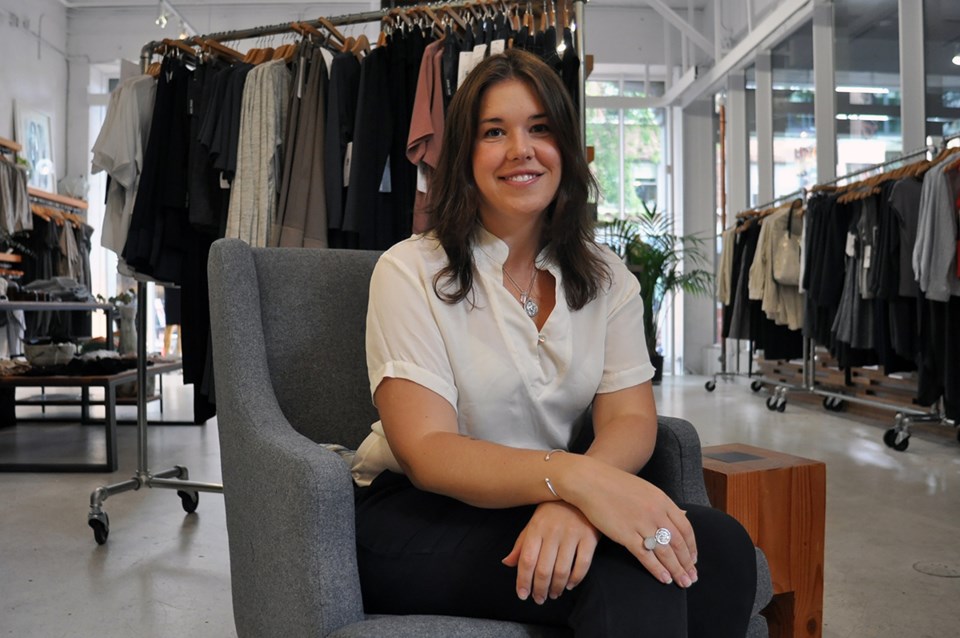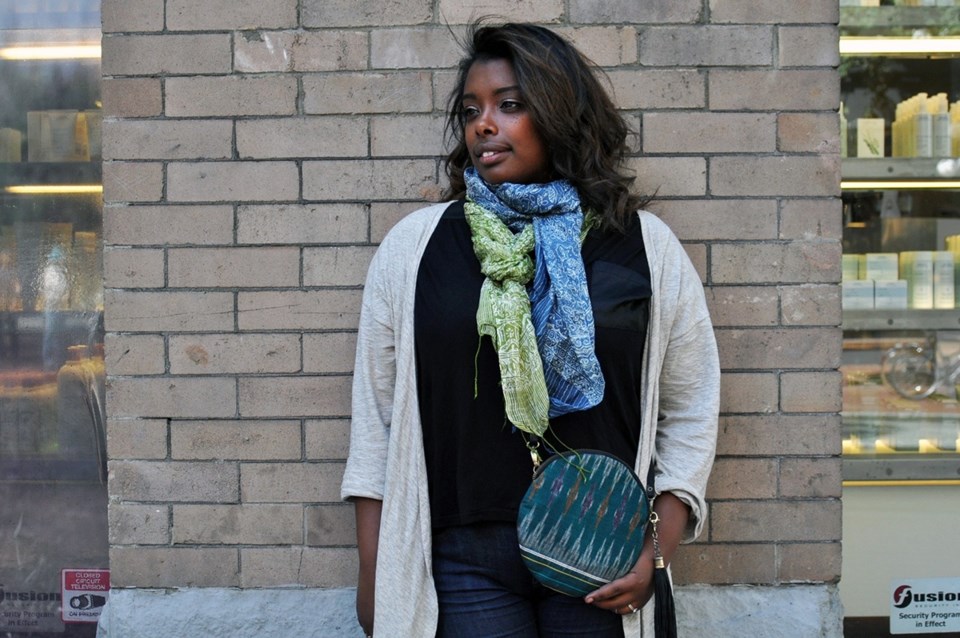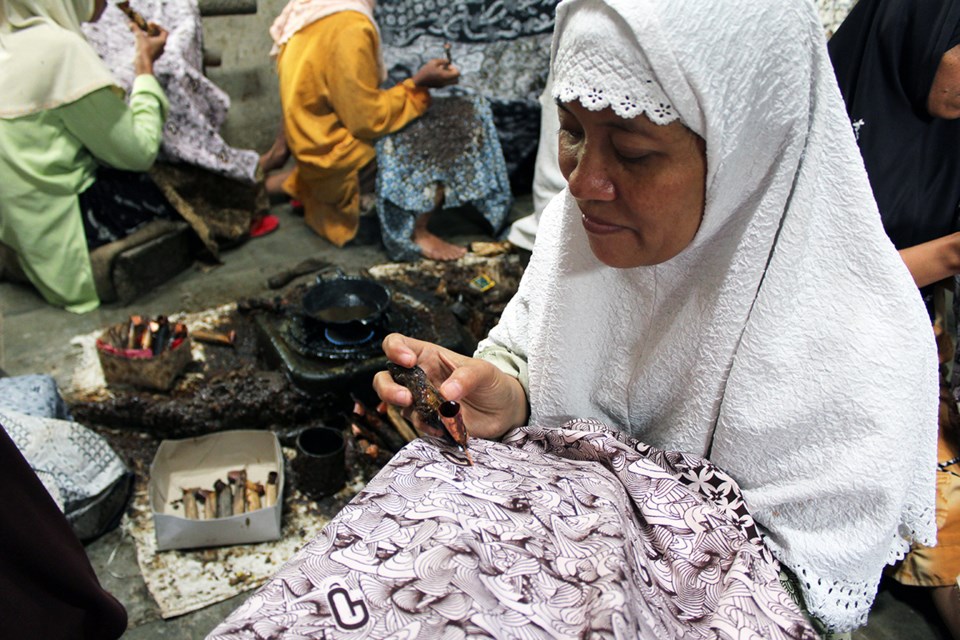For many Canadian consumers, a clothing tag that reads “Made in Indonesia” conjures images of cheap labour, factory sweatshops, and haphazard environmental practices. When it comes to fast fashion that can be picked up on the cheap in a mall setting, that’s often the case.
A few Vancouver-based designers, however, are at the helm of the slow fashion movement – a movement that encourages slow production schedules, small batch orders, fair wages, and low environmental impact. For many, the qualifying term is “locally-made.”
According to those championing the slow fashion cause, it doesn’t have to be.
Partnering with progressive creative co-operatives based in Southeast Asian countries such as Indonesia, local designers are bringing high-quality clothing to Vancouverites with an emphasis on low human and environmental cost.
“Just because it’s local doesn’t mean it’s ethical, by any means… the standards for mills in Asia are much better than here because their factories are so much bigger. Here, you have these tiny little sweatshops,” Nicole Bridger tells the Westender.
Bridger’s self-named shop, located in Gastown, offers up business-casual threads for the 30-something career woman, complete with a smattering of minimalist jewelry from Bali-via-Tofino designers House of Alaia.

The eco-fashionista – who got her chops running Oqoqo alongside Lululemon’s Chip Wilson – was recently forced to shut down her Vancouver factory after high manufacturing costs put her company in the red.
“What I’m most excited about is ethical manufacturing overseas. Here, a real living wage is $21 an hour, and it’s difficult to pay an honest living wage,” Bridger says. “It started to not make sense to me to manufacture in one of the most expensive cities to live in.”
While ultimately a savvy business move, Bridger’s move to sourcing threads abroad promises to uphold her brand’s ethos.
“That money could go so much further in other parts of the world, and it can make a much bigger impact in the livelihoods of people. I’m looking for lots of different pockets to support different women cooperatives all over the world that also really honours their traditional techniques so they don’t get lost.”
Such is the case for one creative co-operative in the West Java city of Bandung, where Batik Fractal – a fashion label that grew out of start-up tech company Piksel Indonesia – is giving traditional Indonesian textile artists a leg up in their field.
Batik artisans often spend up to a month on a single piece of cloth, using a technique that requires delicate handiwork, drawing with hot wax, drying several yards of cloth, and several applications of dye. The art was recognized by UNESCO – the United Nations Educational, Scientific, Cultural Organization – in 2009 as an intangible cultural heritage of humanity.
Batik Fractal’s progressive business model allows independent artisans to create using their traditional craft, meanwhile ensuring they’re paid a living wage with a contractor’s freedom.
“What I see now is that the existing business model for the batik industry is failing the batik artisans,” says Nancy Margried, CEO of Batik Fractal and Piksel Indonesia.
The Bandung-native employs contractors to recreate Batik Fractal’s designs using traditional methods or create their own designs to be sold by her label. The workers set their own hours and productivity rates. The final products – dresses, tees, blouses, purses and more – are sold in Indonesia, the United States, Australia, and in Vancouver.
“Right now I think batik is underrepresented in the world,” Margried says. “If you see saris from India, or even Japanese kimonos, it’s very famous, but batik is underrepresented. People still know about batik, but they don’t know how it’s done and how delicate and how beautiful this piece of art is, and how forward-thinking it is.”
Currently, batik textiles in Vancouver can be found at the Museum of Anthropology, where import and retail company Citranti has set down some scarves. They can also be found anywhere local designer Bayoush Mangesha sets up a table for a local market via her not-for-profit fashion organization Devi Arts Collective.
Mangesha uses textiles from Batik Fractal, along with traditionally woven fabrics from Nusa Penida off the coast of Bali, in her designs, which include hand-stitched purses and home décor.

“I had a jewelry line called Bayoush Designs, and I decided I wanted to be more accountable to where my raw materials came from,” Mangesha divulges, recounting the inception of Devi Arts Collective.
The Ethiopian-born, Vancouver-raised designer reveals that, on a sourcing trip to Indonesia, she was inspired by a lot more than gemstones and silver.
“When I went to Bali, what I realised is that what I wanted in regards to the jewelry components weren’t there, but I was in the land of the handmade everything else,” she says.
“The Balinese are amazing handi-crafters, so I went and saw amazing fabrics, amazing hand-carved pieces, amazing traditional spiritual jewelry like malas and I realized that I needed to broaden my horizons as to what I was sourcing.”
What she brought back were hand-designed textiles, hand-woven arts and, of course, a few gemstones. Back in Canada, the designer had a chance run-in with Citranti’s Liza Wajong, an Indonesian-born textile importer and retailer, at a gift market they were both selling at.
“I find that by working with small artisans in Indonesia, I can also help them with the economic development aspect of their businesses,” Wajong, who immigrated to Vancouver from the island of Java 20 years ago, explains.

Her fashion company, Citranti, is committed to sourcing, importing, and reselling ethically-produced textiles from Indonesia to Canadian fashion designers.
“With that in mind, and knowing that Vancouver is also the haven for ethical sustainable initiatives, I knew that it was a great match for me to bring Indonesian products, that are produced ethically, to Vancouver.”
Funny enough, Wajong was Batik Fractal’s first point of contact in Canada, and the importer is now in talks with Bridger on sourcing those fabrics.
Both women can attest the conversation on ethical sourcing between consumers to designers and designers to suppliers is becoming easier.
“Clothing is hard because you don’t just grow it and make it all in one space. Where it’s grown and harvested could be a completely different continent than where it’s milled and yarned, and maybe it’s sent to another continent to be woven and processed and dyed. It’s such a huge chain and I’m ordering very tiny amounts of fabric, it’s hard to find out,” Bridger admits.
But, she digresses, there’s miles of difference with the Nicole Bridger brand than when she started out with Oqoqo in the early 2000s.
“The conversation has gotten easier, both with suppliers and with customers. Back when I started Oqoqo, it was much more difficult and there weren’t as many certifications out there that I could rely on. Same with consumers. Consumers couldn’t understand why – why organic? They didn’t really care, and now I never hear that – I just hear, ‘Oh, that’s awesome!’” she says.
Wajong echoes the sentiment.
“When I started this business last year, there weren’t so many discussions around ethically-sourced products, especially those who try to understand the tradition of batik,” she explains. “Now, ethical fashion appreciates the ethical practices in the process, and I know Indonesia has the capacity to produce the kind of fashions that are produced responsibly, using ethical practices while still maintaining excellent craftsmanship.”
Another main tenet of the slow fashion movement aims to reduce the amount of textile waste consumers discharge yearly.
Though Bridger admits it seems counter-intuitive to her business, the cure is simple: buy less and enjoy for longer.
“I want to be comfortable all day long in my crazy busy life, and also wanting to wear it five years later. Sometimes you feel like in order to be relevant, you need to buy what’s trendy. To me, what’s trendy is what’s trashy,” the fashionista asserts. “[We aim to] educate consumers on how to be better consumers, in general, buying less and buying better pieces that you can have for longer."



